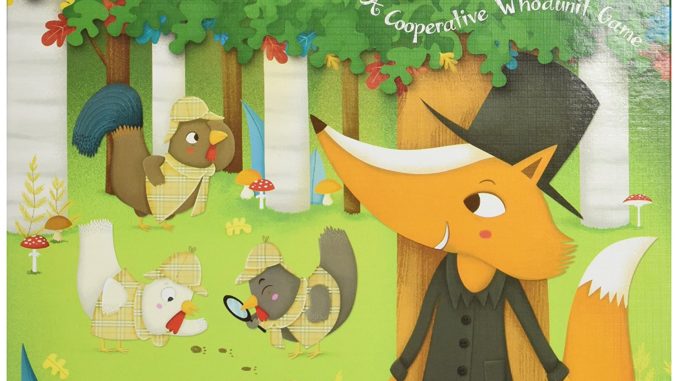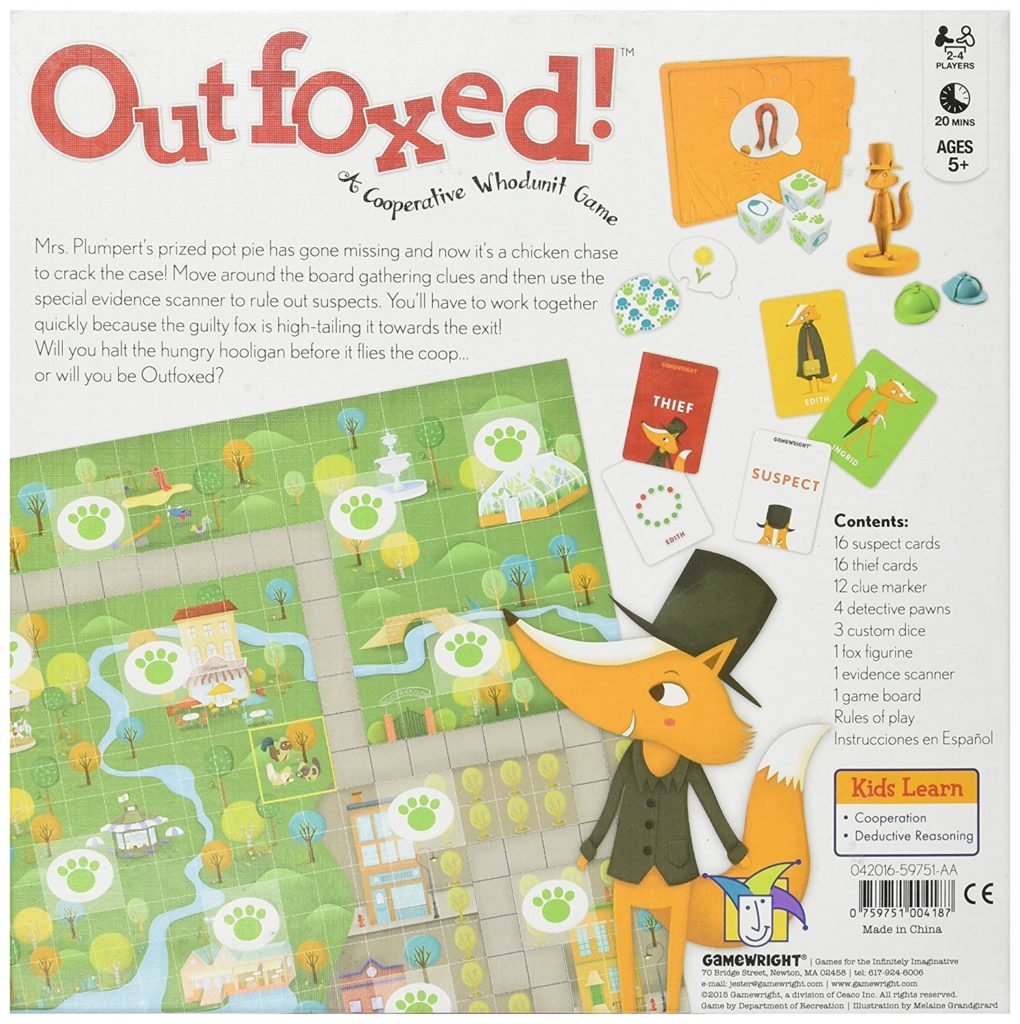
Game Overview
Outfoxed! is a lighthearted, kid-friendly mystery: players must determine who stole Mrs. Plumpert’s missing prize pie! But, everyone must do it before the guilty fox gets away.
Players as young as five can play and enjoy this game. And since it’s cooperative, children can work with parents to solve the mystery.
The game requires participants to use deduction, as they move around the board and accumulate clues, to eliminate potential culprits. And, to boot, there is an evidence scanner for some extra imaginative play.
Contents
- 16 suspect cards
- 16 thief cards
- 12 clue markers
- 4 detective hat pawns
- 3 custom dice
- 1 fox figurine
- 1 clue decoder
- 1 game board
The 16 suspect card are unique: different color background and each fox has a different name and appearance. It feels a bit like Guess Who in that you start noticing the different clothing and identifying features of each fox. For example, some have hats and some have scarves. And there is at least one monocle (the guiltiest of all clothing items!).
Setting up the Game
Setting up requires shuffling cards and positioning each player so that he/she can reach the board. Each player chooses a detective hat that goes in the center of the board.
The 16 suspect cards are placed around the board (4 on each side) and 2 are flipped to reveal their respective suspect.
One thief card is randomly selected and placed in the clue decoder.
The fox pawn is placed at the start of a path, which the fox will continuously be trying to reach the end of during the game.
Playing the Game
On each player’s turn, she/he must decide if they are attempting to reveal suspects or search for clues.
They then roll 3 dice, any of which they can re-roll up to three times. Each of the dice depicts a symbol representing the two options. The goal is to have all 3 dice match the desired outcome before the three chances for the turn are used.
But if a player is unsuccessful, the fox gets to advance down the path!
If the player is successful, though, then he/she gets to take an action.
If the goal was to reveal suspects, then two new suspect cards are revealed. This should prompt players to review their clue cards to determine if either of the new suspects can be eliminated as the pie thief.
If, instead, searching for clues was the objective, then the player counts the paw prints on all dice and advances his or her detective hat token that many spots.
If the token lands on a clue marker, then the marker is placed in the clue decoder to reveal the clue (which is just an indicator whether the thief was or was not wearing a particular item).
And now all players can check clues to determine if any suspects can be exonerated.
The turn ends after either unsuccessfully matching dice—and moving the fox pawn further towards its escape—or searching for clues / reveal suspects. The next clockwise player takes his/her turn.
Play continues until either players are able to determine who stole the pie, or until the fox escapes. The fox also escapes if the wrong suspect is identified.




Comments
Positive
The game does not take itself serious. By that, I mean that the art and characters create a fun, humorous setting that kids can enjoy.
The game is entertaining enough to not bore adults, while being accessible to kids as young as 5 (and perhaps younger or older, depending on any given child’s development).
Negative
The biggest complaint I, and many others, have is the choice to use green to indicate a negative. That is, green is used to denote a suspect did not wear an item; and conversely, red is used to denote the suspect did.
The game is obviously not targeted towards adults, which is a good thing since the puzzle can be quite readily solved by adults. However, the game works very well with its target audience: families with younger (5-8 years old) children.

Be the first to comment